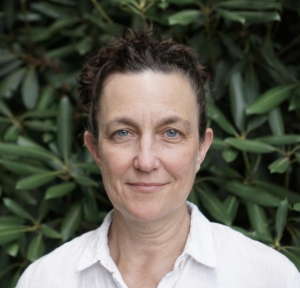
Research, policy, and practice by conservators with Indigenous communities in North America.
SAMANTHA ALDERSON, ELLEN CARRLEE, AND KELLY McHUGH
“Conservation support of institutional advances in community collaboration: The loan of a Haida chest and the renovation of the Northwest Coast Hall at the American Museum of Natural History”
Abstract
Over the last five years, the conservation staff in the Anthropology Division of the American Museum of Natural History has participated in two projects that represented advances in community collaboration for the institution. The loan of a chief’s chest to the Haida Gwaii Museum in 2017 was the first from AMNH to an originating community for ceremonial use. The renovation of the museum’s historic Northwest Coast Hall was completed in 2022 and was the first permanent cultural exhibit hall to be redesigned working with a team of consulting curators from represented indigenous groups. This presentation will summarize conservation participation and support for these projects and outline specific efforts conservation staff made to facilitate and expand community involvement.
Biography
 Samantha Alderson received an advanced certificate in the Conservation of Historic and Artistic Works and a MA in the History of Art and Archaeology from the Conservation Center of the Institute of Fine Arts, New York University in 1994, where she has been teaching advanced courses in objects conservation since 2005. She has held a variety of positions at AMNH since starting as an intern in the Anthropology Conservation lab in 1993, becoming the Assistant Director of Conservation in 2021. She has researched, presented, and published on a wide variety of topics including the conservation of material culture from the Pacific Northwest and Siberia, archaeological ceramics from Mesoamerica, adhesives for conservation, and climate monitoring for museums.
Samantha Alderson received an advanced certificate in the Conservation of Historic and Artistic Works and a MA in the History of Art and Archaeology from the Conservation Center of the Institute of Fine Arts, New York University in 1994, where she has been teaching advanced courses in objects conservation since 2005. She has held a variety of positions at AMNH since starting as an intern in the Anthropology Conservation lab in 1993, becoming the Assistant Director of Conservation in 2021. She has researched, presented, and published on a wide variety of topics including the conservation of material culture from the Pacific Northwest and Siberia, archaeological ceramics from Mesoamerica, adhesives for conservation, and climate monitoring for museums.
“Collaborative Conservation in a Small Place”
Ellen Carrlee
Abstract
A “networks of care” approach focused around a technology such as Chilkat weaving or a cultural material like gut can facilitate impactful collaboration with limited resources. Objects are important because objects are important to people. If we extend the possibility of agency or even personhood to objects, animals, plants, people and beyond, a web of relationships can come together for the benefit of all these participants. One case study illustrates relationships surrounding the dye analysis, treatment, exhibition, and sharing of knowledge about woven wool textiles of the Tlingit, Haida, and Tsimshian people. Another case study explores relationships in the harvesting and processing of gut, why the material is obsolete, and why it is still important to people today through collaborations with Yup’ik, Alutiiq/Sugpiaq, Iñupiaq, and other Alaska Native artists and cultural experts.
Biography
 Ellen Carrlee has been the objects conservator at the Alaska State Museum since 2006. She was trained in ethnographic and archaeological objects conservation at New York University (MA 2000) and in cultural anthropology at the University of Alaska Fairbanks (PhD 2020). Her work has included community collaborations, moving a museum, treatment of waterlogged and shipwrecked materials, emergency preparedness, collection surveys, collections policy development, preventive conservation, and general object treatment. Her research interest focuses on analysis, treatment, and community access to collections made from plant and animal materials, incorporating indigenous collaboration and networks of care through frameworks borrowed from social science theories and methods.
Ellen Carrlee has been the objects conservator at the Alaska State Museum since 2006. She was trained in ethnographic and archaeological objects conservation at New York University (MA 2000) and in cultural anthropology at the University of Alaska Fairbanks (PhD 2020). Her work has included community collaborations, moving a museum, treatment of waterlogged and shipwrecked materials, emergency preparedness, collection surveys, collections policy development, preventive conservation, and general object treatment. Her research interest focuses on analysis, treatment, and community access to collections made from plant and animal materials, incorporating indigenous collaboration and networks of care through frameworks borrowed from social science theories and methods.




